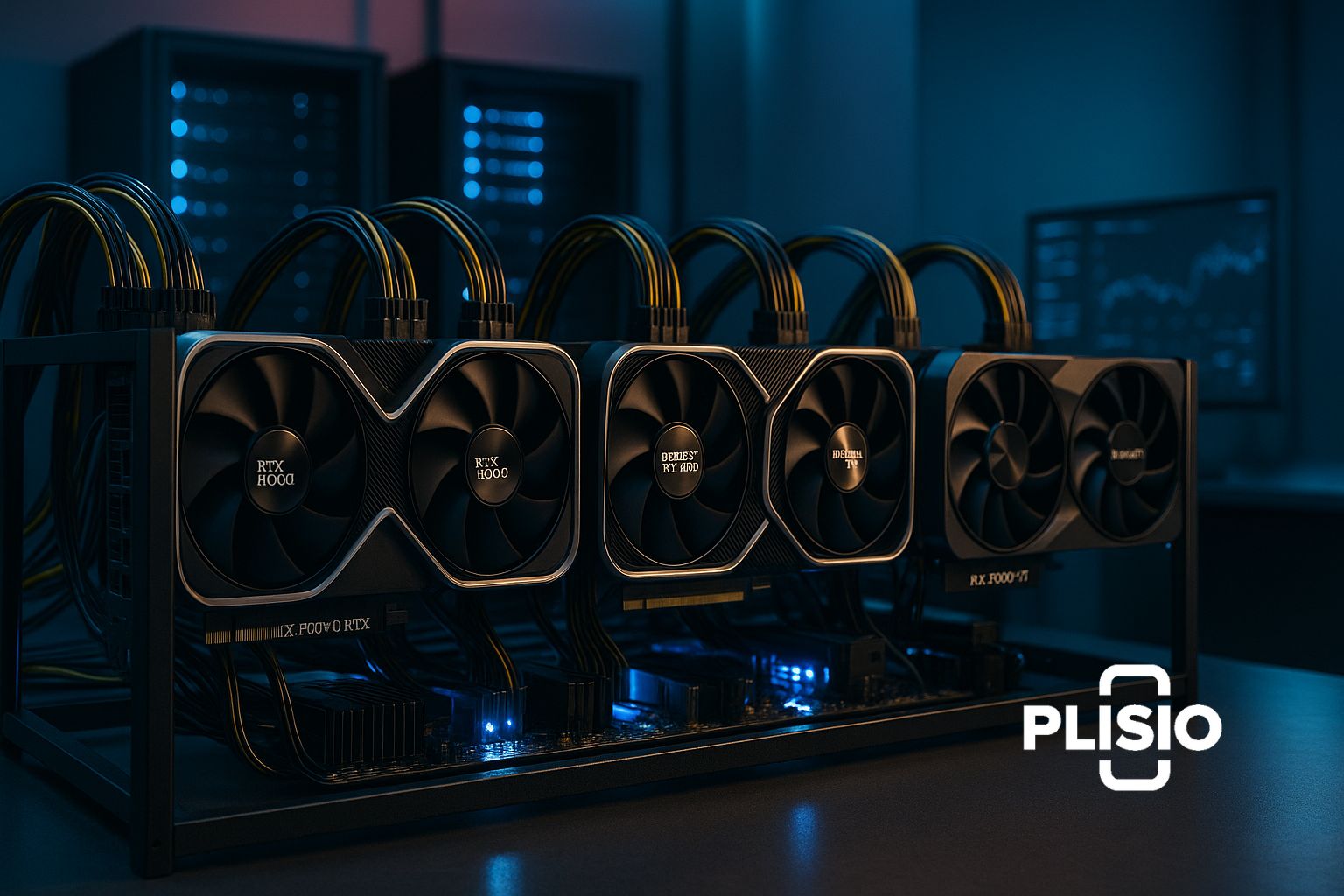2026`s Best GPUs for Mining: The Best Options for Efficiency and Profitability

Finding the best GPU for mining is still essential for any serious cryptocurrency miner in 2026. The performance, profitability, and long-term return on investment of cryptocurrency mining can all be directly impacted by the graphics card you choose. Knowing the current leaders is essential to building a successful mining rig, especially with the newer GPUs and mining hardware on the market.
The Development of GPU Mining
Due to its accessibility, affordability, and flexibility, GPU mining has long been preferred over ASIC devices. The market is currently dominated by NVIDIA and AMD Radeon RX models, each of which has distinct benefits in terms of hash rate, power consumption, and overall profitability. In the fiercely competitive world of cryptocurrency, energy efficiency, boost clock, and electricity costs are just as crucial as processing power.
Miners now consider long-term support, PCIe bandwidth, and driver updates in addition to power. Miners must adjust to market fluctuations and dag file sizes more quickly due to the growing blockchain network.
2025's Top 10 GPUs for Mining
The top ten GPUs for mining are listed below, arranged by benchmark, mining calculator output, and mining profit:
- NVIDIA GeForce RTX 4090: This GPU offers unparalleled hashrate for high-end cryptocurrency mining, thanks to its massive 24GB of GDDR6X memory. It requires a lot of memory and works best with algorithms like Autolykos (used in Ergo) and Ethash.
- The top-tier NVIDIA GeForce RTX 3090 Ti graphics card is ideal for memory-intensive coins like Ravencoin because it combines powerful processing unit performance with 24GB VRAM.
- A top-tier RX model with amazing mining performance and reduced power consumption is the AMD Radeon RX 7900 XT. It is effective for GPU mining due to its gddr6 memory.
- NVIDIA GeForce RTX 3080 Ti: This graphics card, which balances price and performance, is a 2025 favorite because of its remarkable power supply compatibility and respectable overall profitability.
- GeForce RTX 3090: A legacy card with outstanding boost clock potential and 24GB VRAM that still works well.
- AMD Radeon RX 6800 XT: Known for its steady dag size and powerful overclocking capabilities, this GPU is ideal for altcoins.
- NVIDIA GeForce RTX 3080: This graphics card, which is still in use in 2025, is very effective and compatible with a wide range of mining software programs.
- AMD RX 6700 XT: Known for its low cost and high energy efficiency, this RX card is ideal for mid-tier miners.
- RX 580: Despite being older and only having 8GB, this device is still popular in low-cost mining rig configurations because it supports drivers and uses little power.
- The NVIDIA RTX 4090 is back because of its ability to be used for both cryptocurrency work and gaming. In high-end builds, it continues to be one of the lucrative GPUs.

Comparison Table: Best GPUs for Mining
|
GPU Model |
VRAM |
Memory Type |
Hashrate (MH/s) |
Power (W) |
Est. Profitability |
Notes |
|
NVIDIA RTX 4090 |
24GB |
GDDR6X |
120-130 |
450 |
High |
Best for high-end mining |
|
RTX 3090 Ti |
24GB |
GDDR6X |
115-125 |
400 |
High |
Great for altcoins |
|
AMD RX 7900 XT |
20GB |
GDDR6 |
100-110 |
300 |
Medium-High |
Efficient and powerful |
|
RTX 3080 Ti |
12GB |
GDDR6X |
95-100 |
350 |
Medium |
Balanced option |
|
RTX 3090 |
24GB |
GDDR6X |
110 |
370 |
High |
Strong legacy card |
|
RX 6800 XT |
16GB |
GDDR6 |
90 |
280 |
Medium |
Great for overclocking |
|
RTX 3080 |
10GB |
GDDR6X |
90 |
320 |
Medium |
Widely supported |
|
RX 6700 XT |
12GB |
GDDR6 |
70 |
230 |
Medium |
Cost-efficient |
|
RX 580 |
8GB |
GDDR5 |
30 |
185 |
Low |
Budget setups |
|
RTX 4090 (dual role) |
24GB |
GDDR6X |
125 |
450 |
High |
Also great for gaming |
Additionally, take into account temperature thresholds and maintenance schedules, particularly when operating a larger mining rig or stacking multiple GPUs. Better cooling and thermal control are features of GPUs like the ASUS ROG Strix.
GPU Comparison and Profitability
Compare GPUs based on efficiency and dependability in addition to hash rate. To estimate real-time returns, use a mining calculator or platforms such as Kryptex. Take into account trends in coin difficulty as well as electricity and power costs.
Because different GPUs perform differently on different platforms, consider operating system support and compatibility with mining software. Custom BIOS modifications or firmware adjustments might be necessary for some to fully realize the mining profit potential.
AMD vs. Nvidia in Mining
While AMD Radeon RX models (such as RX 7900 XT and RX 6800 XT) shine with less initial investment, NVIDIA GeForce RTX cards (such as RTX 4090, RTX 3090, and RTX 3080) offer premium GPU solutions. Performance-wise, NVIDIA is superior, but it might need better cooling systems and power supply ratings.
AMD GPUs, on the other hand, are more widely accessible and more reasonably priced, and they are better at mining particular coins like Ergo or Ravencoin. The ideal GPU for various miner profiles is determined by this balance.

Concluding remarks
The top GPUs for mining in 2025 are those that provide a balance between processing power, energy economy, and mining efficiency. The right GPU combined with dependable mining software, a stable setup, and a mining pool can optimize output and guarantee long-term success in the blockchain space, regardless of your focus on Bitcoin, Ravencoin, Ergo, or other well-known cryptocurrencies.
Keep in mind that asic competition, block reward modifications, and cryptocurrency pricing trends are ever-changing. In this dynamic market, staying competitive and increasing your return on investment requires you to compare new releases and update your mining calculator estimates on a regular basis.



